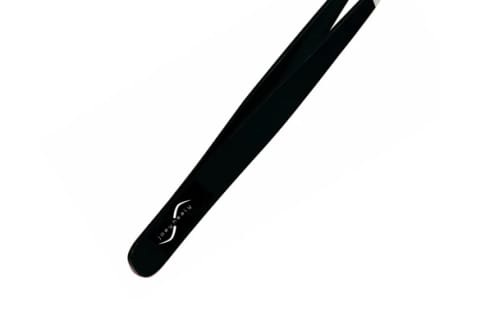After you watch said videos, you might end up a little confused, if not apprehensive. How does the thread lasso each hair into its grip? How long do these immaculate brows last? And perhaps the most pressing question of them all: How much does it hurt? Ahead, we tapped brow experts for everything you need to know. The service is most popular for eyebrows (hence, the name), but you can technically thread any unwanted facial hair—upper lips, chin, cheeks, etc. Just don’t try to thread anything beyond the face, as it’s far better suited for those tinier, wispier strands. No matter the method, the threader will start by wiping the area clean—even if you arrive with a bare face, they’ll want to remove any lingering skin care residue. You’ll also likely sit in a reclining chair so the threader has access to more surface area. After the threading, they might apply some sort of cooling gel to the area, especially if you have any redness or irritation. “For those with sensitive skin, we do apply a little bit of tea tree oil or aloe vera,” says Healy. And while threading is more precise than waxing, nothing is more accurate than using a set of tweezers to pluck each individual hair. “Tweezing is more artistic,” says Healy. “It’s more of a slower process, but you really sculpt the brow in a more efficient way with an eye toward symmetry.” Vincent seconds the notion: “Nothing beats the precision of tweezing because it assesses how each hair contributes to the overall brow and doesn’t remove hair in hard, straight lines,” she says. Now, you’re probably thinking: Which brow service is most painful? Ultimately, it all comes down to your personal pain tolerance, but people generally find threading less painful than waxing. The technician will also pull your skin taut before each round, which can decrease the discomfort. However, threading is not exactly pain-free: Many report a burning, tugging effect, particularly on thinner, more delicate areas like above the lip. “There is also some risk of skin being cut or damaged by being pulled into the thread,” notes Vincent. As for aftercare, you’ll want to stick to gentle, nourishing skin care products for a few days. Your freshly threaded brows are super sensitive, as the follicles are open, so you don’t want to layer on any harsh actives for the time being. If you do have any lingering irritation, both Healy and Vincent recommend applying a drop of aloe vera gel to help soothe the area—just make sure you choose a 100% pure option with no fragrance or artificial dyes. (Check out our recommendation below.) Other than that, try to keep your hands off the brow area. It can be tempting to smooth your fingers over your new brow shape, but you don’t want any bacteria from your hands seeping into those open follicles. If you’d like to buy more time before your next thread, tweezing stray hairs can make a world of difference. “It’s always good to have a tweezer at home, like our Elite Sculpting Tweezer, even if you’re a fan of threading, because tweezing can help you keep up with them,” says Healy. Slick on some brow gel and a drop of powder to define the arches, and you should be set until your next appointment. It may be better to hold off, anyway, until the brows become really unruly: “When you’re going to see a professional, you want to give them as much to work with as possible,” Healy adds.
Eve Lom Muslin Cloths
Seven Minerals Organic Aloe Vera Gel
Joey Healy Elite Sculpting Tweezer





